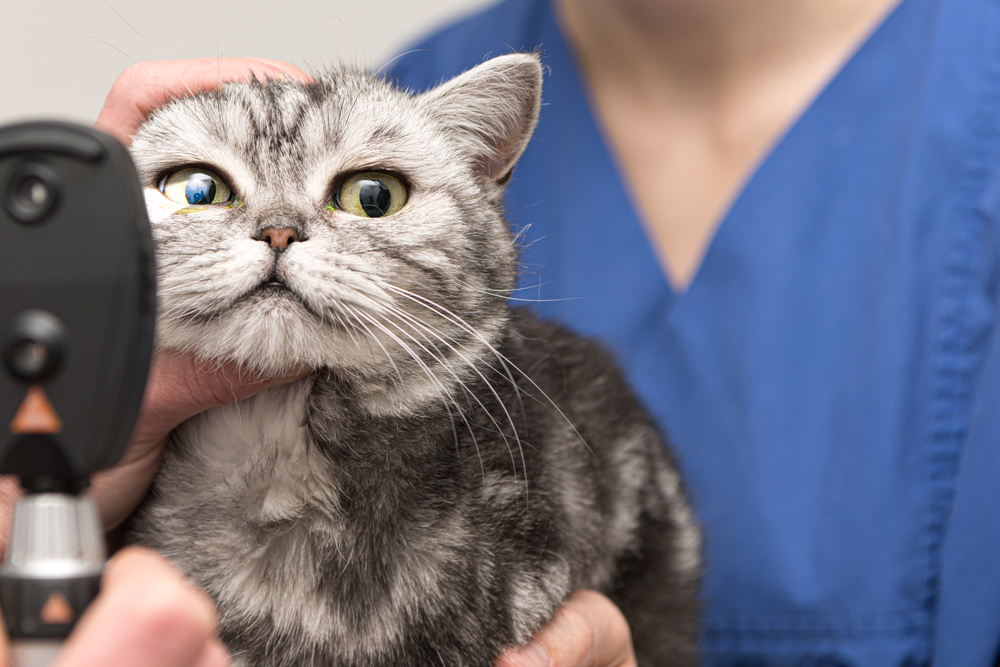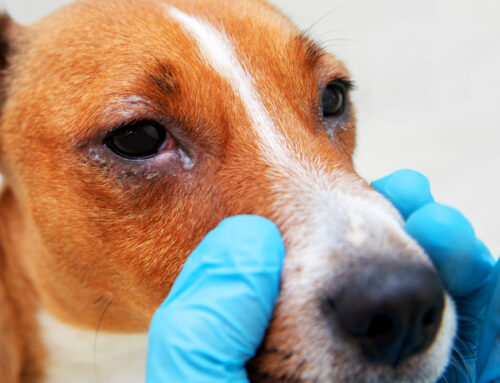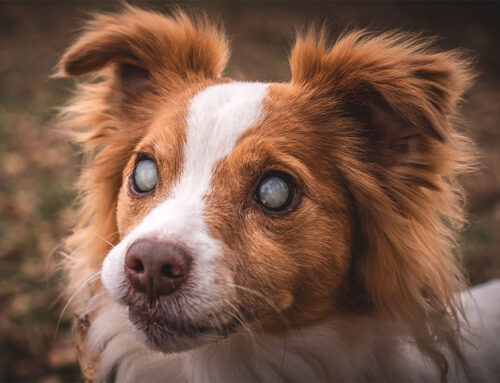The retina is a light-sensitive layer of cells along the back of the eye that triggers impulses through the optic nerve to the brain, forming a visual image. Progressive retinal atrophy (PRA) is a degenerative disease that causes these retinal cells to deteriorate, resulting in a progressive decline in an affected pet’s vision. Our team at Veterinary Vision Center wants to educate you on this troublesome condition, so you are informed should your pet be affected.
What causes progressive retinal atrophy in pets?
PRA is an inherited disease that is commonly diagnosed in purebred dogs. Two forms of PRA have been characterized in cats, but they are rarely affected.
- Dogs — PRA usually occurs when a dog receives a mutated gene from each parent, which is known as autosomal recessive inheritance. The photoreceptors form and function normally at first, but then degenerate over time. The age of onset varies depending on the breed. Breeds more commonly affected by PRA include:
-
- Cocker spaniel
- Miniature poodle
- Akita
- Dachshund
- Labrador retriever
- Papillon
- Cats — PRA can be caused by a mutation in the CEP290 gene or a mutation in the CRX gene. PRA secondary to CEP290 mutations are caused by an autosomal recessive inheritance, and characterized by slow but progressive photoreceptor degeneration. Blindness typically occurs at 3 to 5 years of age. PRA secondary to CRX mutations is caused by an autosomal dominant inheritance. This means that only one mutated gene is required to result in the disease. In this form, the degeneration occurs in the first few weeks of life and results in blindness in a few months. Certain breeds are predisposed to both forms of PRA, including.
-
- Abyssinian
- Somali
What signs do pets affected by progressive retinal atrophy exhibit?
Blindness affects both eyes, but vision loss is gradual, allowing pets time to adjust. The first sign most owners recognize is diminished night vision. Then, you may notice that your pet is becoming clumsy, startles easily, and has dilated pupils. Some pets are so good at adapting that you may not notice their vision loss until they are completely blind.
How is progressive retinal atrophy in pets diagnosed?
A veterinary professional will be able to see changes indicating retinal degeneration on an ophthalmic exam. In some cases, the retinal exam is inconclusive, or cataracts, a common secondary complication of PRA, may inhibit an adequate view of the retina. In these cases, an electroretinogram (ERG) can be performed by the team at Veterinary Vision Center. This test measures electrical responses in the retina in response to a flashing bright light, and will demonstrate a decrease in retinal function in pets affected by PRA. DNA-based genetic testing is available for some breeds, to confirm a diagnosis and screen for carriers.
How is progressive retinal atrophy in pets treated?
No treatment exists for PRA but, fortunately, the condition is not painful. Screening breeding animals is important, to prevent the perpetuation of this debilitating disease.
Pets tend to adjust well to vision loss, especially when the loss occurs gradually. Your pet’s diagnosis may be more upsetting for you than for them. However, while no treatment exists, certain management practices can be employed to help your pet adjust to the situation.

- Communication — Talk to your pet frequently to let them know where you are. Blind pets can startle easily if you suddenly touch them, so speak to them, or tap your foot, as you approach. You can teach your pet verbal commands to ensure you and your family continue to interact with them, and they remain an active participant in your household. Tell visitors that your pet is blind, and ensure they know not to touch your pet without speaking to them first. When you go for walks, have your pet wear a vest that states they are blind, to ensure your fellow pedestrians understand the situation.
- Consistency — Blind pets need a consistent world. They are good at using their other senses to navigate your home, as long as drastic changes are not made. Do not move your pet’s food and water bowls. Avoid moving your furniture, which will only confuse your pet. Keep the floor free from clutter to prevent tripping hazards. When walking your pet, follow the same route, to help them gain familiarity with the pathway.
- Safety — In the initial stages, you may need to pad sharp edges in your home to prevent your pet from injury. Ensure objects are stable and cannot be tipped over if your pet bumps into them. Use baby gates to close off access to stairs to prevent falls. Never let your blind pet outside unsupervised, and always keep them on a leash when not in a gated area. Monitor them closely near water and high ledges.
Since preventing affected animals from breeding is the only way to counteract this devastating disease, genetic testing of all breeding animals, and particularly genetically predisposed breeds, is extremely important. However, affected pets can live a long, happy life, as long as their owner is willing to take a few necessary safety precautions. If you believe your pet’s vision may be declining, contact our team at Veterinary Vision Center to schedule an appointment.







Leave A Comment